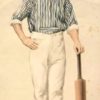
Joanne Wilkes, “The Implications of the Cricket Match in Anthony Trollope’s The Fixed Period (1882)”
Anthony Trollope’s late novel The Fixed Period (1882), set a century in the future in a fictional South Pacific island, has often puzzled readers. It deals with a policy of compulsory euthanasia in the politically independent island of Britannula, a policy that is overturned when the island is taken over by Britain. My article aims to explain an odd interlude in the novel: a cricket match in Britannula between a local and an English team. Drawing on the history of cricket matches between England and its antipodean colonies around the time of the novel’s composition, I argue that the cricketing interlude serves to highlight the text’s take on the Britannulans. This community, living a hundred years in the future, claims to be autonomous, but it possesses a mindset still governed by a sense of Britain as the “mother country.” Hence Trollope emphasizes how difficult it is for settler societies to shake off such attitudes and ties.
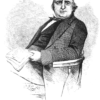
Janice Schroeder, “The Publishing History of Henry Mayhew’s London Labour and the London Poor”
Versions of Henry Mayhew’s massive social survey London Labour and the London Poor appeared in several publishing formats, including newspaper column, weekly serial, live stage show, and bound volume. This article traces the republication and remediation of London Labour alongside Mayhew’s repackaging of his interviews with London “street-folk” from 1849 onwards. I offer a succinct, accessible account of the complex publishing history of the text, from print newspaper column to digital edition.
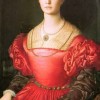
Jill R. Ehnenn, “On Art Objects and Women’s Words: Ekphrasis in Vernon Lee (1887), Graham R. Tomson (1889), and Michael Field (1892)”
Studies of women’s ekphrasis prior to modernism have, so far, tended to focus on individual women writers rather than attempt to identify trends that female authors from a particular time period might share. This essay intervenes in this gap in the scholarship by analyzing ekphrastic prose and poetry by Vernon Lee, Graham R. Tomson, and the co-authors who wrote as Michael Field. As female Aesthetes well-versed in art history and art criticism, as well as contemporary market practices, these nineteenth-century women writers anticipate today’s feminist theorists in the ways in which they were quite conscious of woman’s role as art object and the various functions of that role.
Here I examine Vernon Lee’s somewhat well-known novella Amour Dure (1887) as a foundational case study and then turn to two considerably lesser studied poems: Graham R. Tomson’s “A Silhouette” (1889) and Michael Field’s “Saint Katharine of Alexandria” (1892), for which I also identify the long-lost ekphrastic referent. These three texts all demonstrate how a specific form of aesthetic intertextuality—ekphrastic representational friction—operates as a powerful vehicle for early feminist criticism. In the examples I discuss, gendered critiques drive representational friction between the word, the visual medium, and its original referent—slippages that these art-savvy authors would have easily recognized and had opinions about in the work of others, and intentionally created and/or appropriated in their own work. Importantly, I also argue that a helpful way to think about ekphrastic writing by women writers associated with nineteenth-century British Aestheticism is to consider representational friction with particular regard to how their texts treat objects—seemingly unimportant objects—associated with their subjects.

Jonathan Mulrooney, “Edmund Kean, Event”
This article considers Regency actor Edmund Kean’s presence as a figure in the theatrical news of the day, arguing that Kean’s acting style, coupled with changes in periodical print culture, reframed the relation between the British theatrical tradition, the actor’s stage performance, and audience reception. Emphasizing an “illegitimate” grammar of representation characterized by gesture, mobility, and emotional transition, Kean enacted new forms of subjectivity that aligned with emerging modes of theatrical criticism to shape readers’ concepts of their own private experience and their imagined engagement with public events.
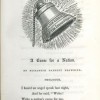
Denae Dyck and Marjorie Stone, “The ‘Sensation’ of Elizabeth Barrett Browning’s Poems before Congress (1860): Events, Politics, Reception”
Elizabeth Barrett Browning’s Poems before Congress paradoxically addresses a political event that never took place: a meeting of European powers to discuss the “Italian question” planned for January of 1860. Nevertheless, the collection addresses several momentous historical developments, including the Second Italian War of Independence in 1859, the intervention of Napoleon III of France in the Italian struggle, and the international conflict his intervention precipitated. Indeed, the book’s publication and the sensation it created in themselves constitute a plurality of events, since the collection appeared under differing titles in England and America and encountered differing responses in each country. Contrary to the still dominant critical view that the volume was almost universally denounced, its reception was shaped by diverse locations, shifting chronological contexts, and conflicting political affiliations. Close analysis of the reviews underscores the importance of these wider contexts, which influence what otherwise appear to be primarily literary or aesthetic judgements. At the same time, analysis of varying responses to not only “A Curse for a Nation” but also “Napoleon III in Italy” and other poems in the volume demonstrates a number of recurring points of contention. These include the collection’s title, the politics of interventions across national borders, English liberalism, the nature of democracy, cosmopolitanism versus nationalism, women writers in relation to politics, poetic form, and, most of all, EBB’s representation of Napoleon III—the issue that is front and centre in most of the 1860s reviews and that shaped, in turn, reactions to all the rest.
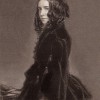
Marjorie Stone, “The ‘Advent’ of Aurora Leigh: Critical Myths and Periodical Debates”
Released by Chapman and Hall on 15 November 1856, Elizabeth Barrett Browning’s Aurora Leigh—a verse-novel and modern epic—set off literary, social, and political reverberations in Britain, North America, and Europe up to the end of the century. “The advent of ‘Aurora Leigh’ can never be forgotten by any lover of poetry who was old enough at the time to read it,” Algernon Charles Swinburne recalled in 1898. By 1900, Aurora Leigh—among much else the first extended poetical portrait of the professional woman writer in English literature—had appeared in more than twenty editions in England and as many in America. Given its innovative, generically mixed form and its controversial contemporary subject matter, it figured in debates over poetry and poetics, the nature of the realist novel, class divisions and social reform, women’s rights, religion, and the politics of nations. Contrary to the critical legend that Aurora Leigh was greeted by an “avalanche of negative reviews,” responses to it were diverse, shaped by periodical competition and differing print-culture, artistic, political, national and religious contexts. This essay surveys seldom-cited notices in the transatlantic daily and weekly press, analyzes critical debates on Aurora Leigh in the major British periodicals, and charts differing patterns in its American and European as compared to its British reception in the years immediately following its publication. It also indicates at points how debates over Aurora Leigh were intertwined with debates in the visual arts associated with the paintings of J. M. W. Turner and the Pre-Raphaelites.

Anna Maria Jones, “On the Publication of Dark Blue, 1871-73″
Dark Blue (1871–73) was a monthly magazine, edited by Oxford undergraduate John Christian Freund, which folded two years after a brilliant debut. During its brief run, it brought together a stunning list of literary and artistic contributors, including Dante Gabriel Rossetti, A. C. Swinburne, William Morris, Andrew Lang, Mathilde Blind, Sheridan Le Fanu, Simeon Solomon, and Ford Madox Brown, who produced aesthetically and sexually daring poetry, art, and criticism. However, it also strove to “appeal to the whole English-speaking public,” as Freund put it, and, thus, included much that might be described as middlebrow, even conservative. Whereas individual texts from Dark Blue, such as Le Fanu’s Carmilla, have received considerable attention, scholars have devoted very little sustained attention to the journal beyond noting its importance as an “artifact” in the history of the Pre-Raphaelite Movement and British aestheticism, and registering puzzlement at the journal’s eclecticism. This essay returns to Dark Blue to uncover common threads among dissimilar writers and artists. With particular attention to the journal’s commitments to transnationalism, I trace three intertwined threads—synesthesia, translation, and sexual dissidence—as they manifest in key texts by Swinburne, Solomon, Le Fanu, and others. Reading these texts in their original context not only demonstrates Dark Blue’s importance to early formations of aestheticism but also helps us to see how aestheticism connects with, rather than stands in opposition to, mid-Victorian culture.

Jane Stabler, “Religious Liberty in the ‘Liberal,’ 1822-23”
A survey of the negative twentieth- and twenty-first-century critical reception of the Liberal; a summary of the history of the journal and a re-evaluation of the philosophical and political coherence of the journal, focusing on its defence of religious liberty and suggesting that religious free thought is a previously overlooked component in the politics of liberalism. The criticism of doctrinal rigidity and advocacy of different forms of religious toleration evident in the four issues of the Liberal support the claim that the journal forms a lucid and intelligible cultural intervention.

Rachel Teukolsky, “Walter Pater’s Renaissance (1873) and the British Aesthetic Movement”
Walter Pater’s Studies in the History of the Renaissance is known as the “golden book” of the British Aesthetic movement. Though ostensibly focused on Italian Renaissance art, the book speaks obliquely to Pater’s own Victorian moment, challenging conventional codes of religion, morality, sexuality, and scholarship. This essay surveys Pater’s diverse methods of quiet rebellion, including his ironic treatment of critical and scholarly norms. The essay’s second part considers the relation of The Renaissance to the emergence of popular aestheticism in the later 1870s.
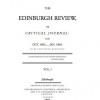
Ina Ferris, “The Debut of The Edinburgh Review, 1802″
The publication of The Edinburgh Review in October 1802 was to alter the landscape and status of periodical publications for the nineteenth century. In its entry into the lowly sphere of review writing, the new journal instituted key innovations that transformed the literary review into a powerful cultural forum within an expanding print culture.
